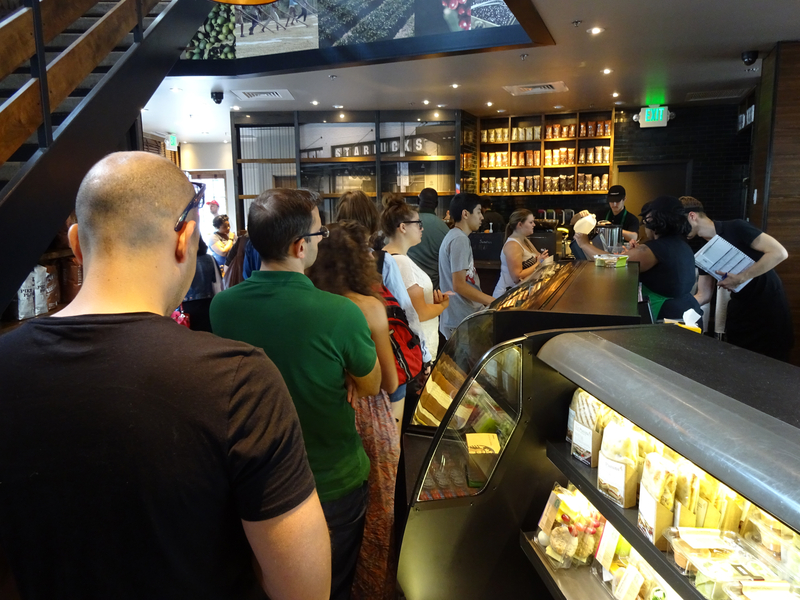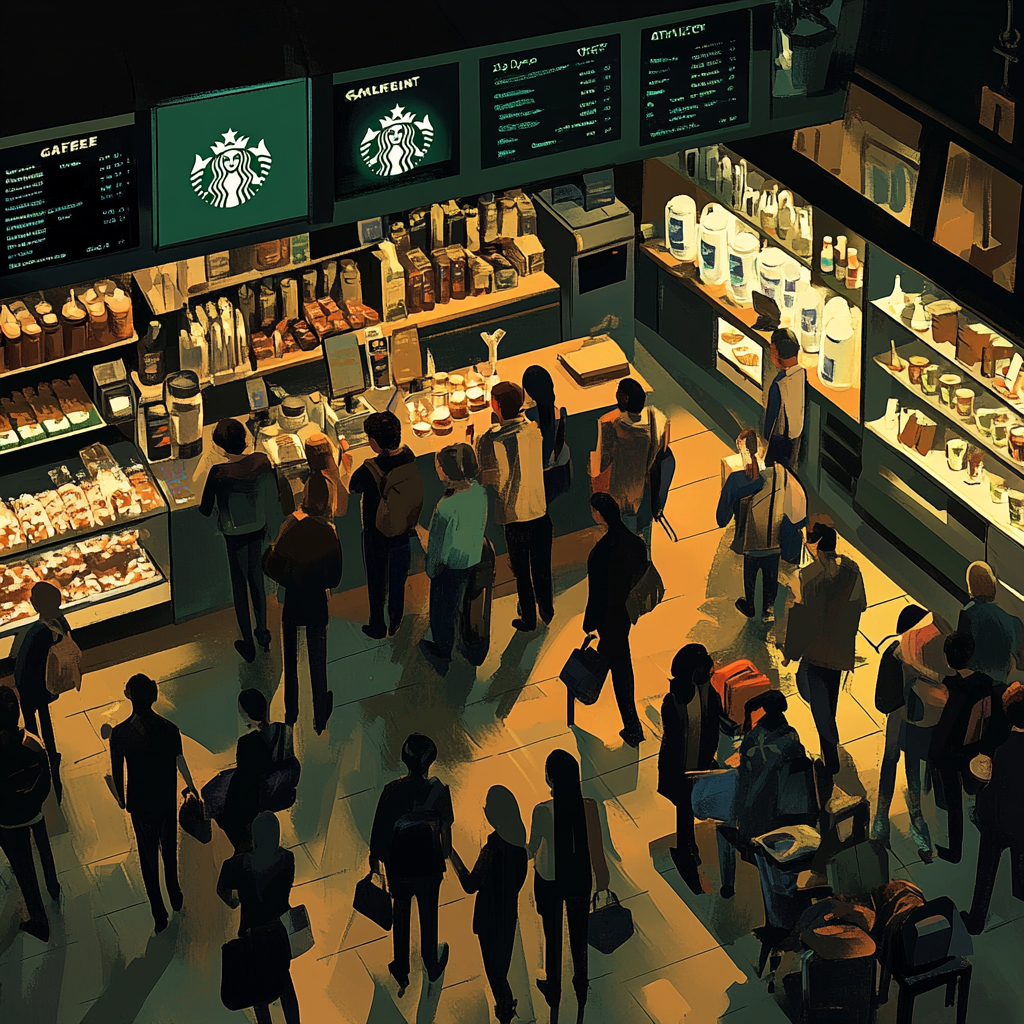Remember when Starbucks was your cozy “third place” between work and home? Those days might be as bygone as flip phones and dial-up internet. The coffee giant has undergone a major transformation, and it’s leaving a bitter taste in customers’ mouths. From marathon wait times to a cold, efficiency-driven atmosphere, Starbucks’ new direction is causing quite a stir. But what’s really brewing behind those green aprons?
Understaffing leads to unbearable wait times

Gone are the days when you could pop into Starbucks for a quick caffeine fix. Now, customers are facing wait times that would make even the most patient saint consider switching to instant coffee. Some reports indicate waits of up to 40 minutes for a simple cup of joe. That’s enough time to watch an entire episode of your favorite sitcom!
The culprit? Severe understaffing. Starbucks has implemented an algorithm to allocate labor, but it seems this digital barista can’t keep up with the real-world demands of a busy coffee shop. The algorithm fails to account for the increasing complexity of orders and the time required for special promotions. As a result, stores are operating with skeleton crews, leaving both customers and employees feeling the heat.
This staffing shortage has led to a domino effect of issues. Baristas are stretched thin, trying to juggle multiple tasks simultaneously. The quality of drinks suffers, customer service takes a hit, and the overall experience becomes more akin to a fast-food drive-thru than the welcoming coffee house Starbucks once prided itself on being.
The disappearing “third place” experience
Remember when Starbucks was the place where you could settle into a comfy armchair, sip your latte, and pretend to work on your novel? Well, those days are fading faster than the foam on a cappuccino. Starbucks has shifted its focus from being a cozy “third place” to a more transactional, grab-and-go model.
This change is evident in the store layouts. Comfortable seating has been swapped out for hard wooden stools that practically scream, “Don’t get too comfortable!” The warm, inviting atmosphere that once encouraged lingering and socializing has been replaced by a more sterile, efficiency-driven environment. It’s as if Starbucks is telling its customers, “Here’s your coffee, now scram!”
The personal touch is disappearing too. Remember when baristas would write your name on the cup? Now, many stores use machines to print labels. It’s efficient, sure, but it lacks the charm and personal connection that made Starbucks feel special. The company seems to have forgotten that people come to coffee shops for more than just caffeine – they come for the experience.
Mobile ordering mayhem

In theory, mobile ordering should make everyone’s life easier. In practice, it’s created a whole new set of problems. Starbucks has leaned heavily into this technology, with over 70% of sales now coming from drive-thru and mobile orders. But this shift has come at a cost.
Baristas are now juggling in-store orders with a constant stream of mobile orders, leading to confusion and delays. It’s not uncommon to see a sea of unclaimed mobile orders cluttering pickup counters, while in-store customers wonder why their simple drip coffee is taking so long. The system that was supposed to increase efficiency has, in many cases, created more chaos.
Moreover, the emphasis on mobile ordering has changed the dynamic of the stores. The hustle and bustle of people ordering and chatting at the counter has been replaced by silent customers staring at their phones, waiting for their names to be called. It’s efficient, yes, but it’s also a bit soulless.
Price hikes leave a sour taste
As if long wait times and a colder atmosphere weren’t enough, Starbucks has also been steadily increasing its prices. Some customers report paying over $6 for a single drink. That’s enough to make even the most devoted coffee lover consider brewing at home.
These price hikes might be justifiable if the quality and experience were improving, but many customers feel they’re getting less for more. The combination of higher prices and declining service has led some loyal Starbucks fans to seek out alternatives, from local coffee shops to home brewing setups.
What’s particularly frustrating for many customers is that these price increases come at a time when the overall experience seems to be declining. Paying premium prices for subpar service and long wait times is a recipe for customer dissatisfaction.
The algorithm ate my coffee shop
At the heart of many of Starbucks’ recent changes is an increased reliance on technology and algorithms. While technology can certainly improve efficiency, it seems Starbucks may have overcorrected. The company now uses algorithms to determine staffing levels, but these digital tools often fail to account for the human element of running a coffee shop.
For instance, the staffing algorithm doesn’t adequately account for the time it takes to make increasingly complex drink orders or handle the influx of customers during promotions. This has led to chronically understaffed stores, particularly during peak hours. It’s a classic case of technology not quite understanding the nuances of human behavior and customer service.
Moreover, the push for algorithmic efficiency has changed the way baristas interact with customers. Instead of having time for friendly chats and personalized service, baristas are often rushing to meet speed metrics, turning what was once a warm interaction into a purely transactional one.
The cultural shift away from customer focus

Perhaps the most significant change at Starbucks is a cultural one. The company that once prided itself on creating a welcoming “third place” now seems more focused on metrics and efficiency than on customer experience. This shift is evident in everything from store design to employee training.
Employees report feeling caught between competing priorities. On one hand, they’re pushed to be more efficient and productive. On the other, they’re asked to create meaningful connections with customers. In practice, these goals often conflict, leaving both employees and customers frustrated.
This cultural shift hasn’t gone unnoticed at the top. Former CEO Howard Schultz has publicly criticized the company’s current direction, urging a return to a more customer-focused approach. But changing course for a company as large as Starbucks is no small feat.
The occasional customer conundrum
One group particularly affected by these changes is the occasional Starbucks customer. Recent reports indicate that Starbucks has seen a decline in traffic from these less frequent visitors, particularly in the afternoons. These customers, who might pop in for an afternoon pick-me-up or a weekend treat, are finding less reason to choose Starbucks over other options.
The loss of these occasional customers is a significant concern for Starbucks. These visitors often represent potential for growth and can be more profitable than regular customers who might be savvier about using rewards programs and promotions. Their departure suggests that Starbucks’ changes are not just affecting its core customer base but are also failing to attract new or infrequent visitors.
To address this issue, Starbucks is planning to launch new beverage platforms and snack items, and increase its marketing efforts. But will these efforts be enough to win back customers who have been turned off by long wait times and a less welcoming atmosphere?


